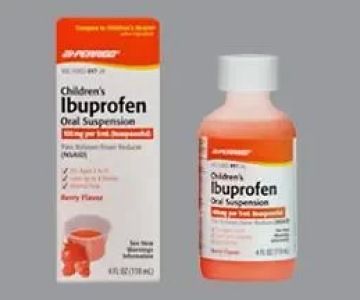Is Oral Thrush in Children Contagious? Understanding the Risks
Oral thrush is a common condition in infants and young children caused by an overgrowth of yeast, particularly *Candida albicans*. This condition results in white patches in the mouth, on the tongue, and inside the cheeks. Parents often have concerns about whether oral thrush in children is contagious, as it can affect their health and the health of others in the household. In this article, we will explore the contagious nature of oral thrush, its symptoms, causes, and how to prevent it from spreading.
1. What is Oral Thrush?
Oral thrush occurs when there is an overgrowth of the *Candida* fungus, which is naturally present in small amounts in the mouth. When the balance of bacteria and yeast in the mouth is disrupted, it can lead to the development of white, cottage cheese-like patches on the tongue, gums, and inside of the cheeks. These patches may be painful or cause a burning sensation, particularly when the child is eating or drinking.
While oral thrush is most common in babies, it can also affect older children, especially those with weakened immune systems or those who have recently taken antibiotics. In young infants, oral thrush may also be linked to breastfeeding, as the infection can be passed between the baby and the mother.
2. Is Oral Thrush Contagious?
Yes, oral thrush is contagious, but the risk of spreading it varies depending on the circumstances. The *Candida* fungus is transmitted through direct contact with an infected person, and while it primarily affects the mouth, it can also spread to other areas such as the skin or genitals. The primary concern is how the fungus is passed on from person to person.
2.1 How Oral Thrush Spreads
Oral thrush can spread in several ways, including:
- Through direct contact with an infected person’s saliva, such as kissing or sharing utensils, bottles, or pacifiers.
- From mother to baby during breastfeeding if the mother has a yeast infection on her breasts or nipples.
- By sharing items like toothbrushes or eating utensils with someone who has oral thrush.
2.2 Risk of Transmission in Families
In families where one member has oral thrush, there is a risk of transmission to others, especially through close contact or shared items. In newborns or young infants, thrush can be passed from mother to baby during breastfeeding if proper hygiene isn't maintained. This is why it’s important for parents to be vigilant about sterilizing bottles, pacifiers, and other items that come into contact with the child’s mouth.
3. Causes and Symptoms of Oral Thrush in Children
Understanding the causes and symptoms of oral thrush can help parents identify the condition early and seek appropriate treatment.
3.1 Causes of Oral Thrush
The main cause of oral thrush is an overgrowth of the *Candida* fungus. Several factors can contribute to the development of oral thrush in children:
- Weakened immune system (e.g., due to illness, medications, or conditions like HIV).
- Use of antibiotics, which can disrupt the natural balance of bacteria and yeast in the mouth.
- Diabetes, which can create an environment in the mouth that encourages fungal growth.
- Breastfeeding, if the mother has a yeast infection on her nipples that passes to the baby during nursing.
- Poor oral hygiene or inadequate cleaning of bottles and pacifiers.
3.2 Symptoms of Oral Thrush
The symptoms of oral thrush in children can vary, but the most common signs include:
- White patches on the tongue, inner cheeks, gums, and the roof of the mouth.
- Painful, sore mouth or throat that may make eating and swallowing difficult.
- Redness or inflammation inside the mouth.
- In severe cases, the patches may bleed when scraped or rubbed.
If you notice these symptoms in your child, it's important to consult a healthcare provider for proper diagnosis and treatment. Oral thrush can often be treated with antifungal medications.
4. Preventing the Spread of Oral Thrush
While oral thrush is contagious, there are several steps parents can take to reduce the risk of spreading the infection within the family. Here are some preventive measures to consider:
4.1 Good Hygiene Practices
One of the best ways to prevent the spread of oral thrush is by maintaining good hygiene practices:
- Regularly wash your hands and your child's hands, especially before feeding or handling pacifiers and bottles.
- Clean and sterilize bottles, pacifiers, and toys regularly to prevent fungal growth.
- If breastfeeding, ensure that the mother's nipples are clean and dry, and treat any yeast infections promptly.
- Avoid sharing eating utensils, cups, or towels with an infected person.
4.2 Treating Oral Thrush Promptly
Early treatment of oral thrush can help prevent it from spreading to others. If your child has oral thrush, it’s important to follow the treatment plan prescribed by your healthcare provider. This may include antifungal medications, which are usually administered as liquids or lozenges. If the infection is in the breastfeeding mother, both mother and baby may need treatment to prevent reinfection.
5. Treatment Options for Oral Thrush in Children
If your child has been diagnosed with oral thrush, it’s important to follow a treatment plan to eliminate the infection and prevent it from spreading. Treatment options for oral thrush typically include:
5.1 Antifungal Medications
The most common treatment for oral thrush is antifungal medication. These medications are available in several forms, including oral gels, liquids, and tablets. In most cases, an antifungal treatment is taken for a week or two, and the symptoms should improve within a few days.
5.2 Probiotics
Some healthcare providers recommend probiotics to help restore the balance of bacteria and yeast in the mouth. Probiotics can help support the immune system and reduce the likelihood of future infections. Always consult with your healthcare provider before using probiotics or any over-the-counter treatments.
5.3 Good Oral Hygiene
Maintaining good oral hygiene is crucial in preventing oral thrush from recurring. Brush your child’s teeth regularly with a soft toothbrush, and if your baby is too young for toothpaste, clean their mouth with a clean, damp cloth after feedings.
For more information about oral health, including tips on preventing infections like oral thrush, visit Dentistry Toothtruth for expert guidance and recommendations.






 Irina Moga, DDS4.0 (199 review)
Irina Moga, DDS4.0 (199 review) Encino Cosmetic Dentistry - Roberta Cerveny, DDS4.0 (36 review)
Encino Cosmetic Dentistry - Roberta Cerveny, DDS4.0 (36 review) Ideal Dental Services: Freedman, Richard S DDS4.0 (180 review)
Ideal Dental Services: Freedman, Richard S DDS4.0 (180 review) David J Wiseman, DDS4.0 (11 review)
David J Wiseman, DDS4.0 (11 review) Discover Dental - Pediatric Dentistry5.0 (1 review)
Discover Dental - Pediatric Dentistry5.0 (1 review) Family Dentist4.0 (5 review)
Family Dentist4.0 (5 review) The Importance of Oral Health Education During Pregnancy for a Healthy Pregnancy
The Importance of Oral Health Education During Pregnancy for a Healthy Pregnancy Best Tips for Brushing Your Teeth Properly for Healthy Gums: Essential Techniques for Oral Health
Best Tips for Brushing Your Teeth Properly for Healthy Gums: Essential Techniques for Oral Health Why Skipping Dental Checkups Can Lead to Bigger Oral Health Problems
Why Skipping Dental Checkups Can Lead to Bigger Oral Health Problems Advantages of Porcelain Dental Restorations
Advantages of Porcelain Dental Restorations How Can Diabetes Cause Tooth and Gum Problems? Preventing and Managing Oral Health Issues
How Can Diabetes Cause Tooth and Gum Problems? Preventing and Managing Oral Health Issues Healthy Habits for Promoting Good Oral Health and Hygiene: Tips for a Healthy Smile
Healthy Habits for Promoting Good Oral Health and Hygiene: Tips for a Healthy Smile